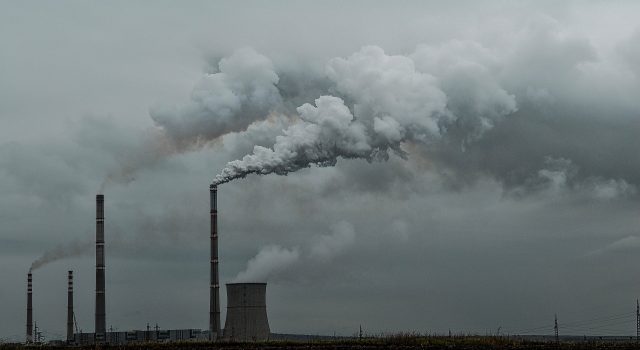Rising nitrous oxide (N2O) emissions are jeopardizing the climate goals of the Paris Agreement, according to a major new study by an international team of scientists.
The growing use of nitrogen fertilizers in the production of food worldwide is increasing atmospheric concentrations of N2O—a greenhouse gas 300 times more potent than carbon dioxide (CO2) that remains in the atmosphere for more than 100 years.
Published today in the journal Nature, the study was led Auburn University, in the US, and involved scientists from 48 research institutions in 14 countries—including the University of East Anglia (UEA) in the UK—under the umbrella of the Global Carbon Project and the International Nitrogen Initiative.
The aim was to produce the most comprehensive assessment to date of all global sources and sinks of N2O. Their findings show N2O emissions are increasing faster than any emission scenario developed by the Intergovernmental Panel on Climate Change (IPCC), consistent with greenhouse gas scenarios that lead to global mean temperature increases well above 3°C from pre-industrial levels. The Paris Agreement aims to limit warming to less than 2°C but ideally no more than 1.5°C.
The study points to an alarming trend affecting climate change: N2O has risen 20 percent from pre-industrial levels—from 270 parts per billion (ppb) in 1750 to 331ppb in 2018—with the fastest growth observed in the last 50 years due to emissions from human activities.
Find your dream job in the space industry. Check our Space Job Board »
Prof Hanqin Tian, director of the International Center for Climate and Global Change Research at Auburn University’s School of Forestry and Wildlife Sciences, co-led the study.
“The dominant driver of the increase in atmospheric nitrous oxide comes from agriculture, and the growing demand for food and feed for animals will further increase global nitrous oxide emissions,” said Prof Tian. “There is a conflict between the way we are feeding people and stabilizing the climate.”
Like CO2, N2O is a long-lived greenhouse gas and is also currently the most significant human-induced agent depleting the stratospheric ozone layer, which protects Earth from most of the Sun’s harmful ultraviolet radiation.
Lead UK author Dr. Parvadha Suntharalingam, of UEA’s School of Environmental Sciences, said: “This study presents the most comprehensive and detailed picture to date, of N2O emissions and their impact on climate.
“This new analysis identifies the factors driving the steadily increasing atmospheric levels of N2O, and highlights the urgent need to develop effective mitigation strategies if we are to limit global warming and meet climate goals.”
The study presents a comprehensive global N2O inventory that incorporates both natural and human-related sources, and accounts for the interaction between nitrogen additions to the earth system and the biochemical processes that control N2O emissions. It covers 21 natural and human-related sectors between 1980 and 2016.
Human-induced emissions, which are dominated by nitrogen additions to croplands, increased by 30 percent over the past four decades to 7.3 teragrams of nitrogen per year.
The analysis also reveals an emerging N2O-climate ‘feedback’ resulting from interactions between nitrogen additions to crops for food production and global warming, further enhancing emissions derived from agriculture.
The study found that the largest contributors to global N2O emissions come from East Asia, South Asia, Africa and South America. Emissions from synthetic fertilizers dominate releases in China, India and the US, while emissions from the application of livestock manure as fertilizer dominates releases in Africa and South America. The highest growth rates in emissions are in emerging economies, particularly Brazil, China and India, where crop production and livestock numbers have increased.
However, N2O emissions in Europe decreased in agriculture and the chemical industry. This was due to a combination of factors, including voluntary measures to remove N2O from flue gases in the Nylon industry and the introduction of an emissions trading scheme, as well as agriculture in many Western European countries moving to more efficient use of fertilizer to reduce environmental impacts such as pollution of groundwater and surface water. Policies on nitrogen fertilizer usage were also introduced.
Study co-leader Dr. Josep ‘Pep’ Canadell, of the Commonwealth Scientific and Industrial Research Organisation (CSIRO) in Australia, is executive director of the Global Carbon Project. He said: “This new analysis calls for a full-scale rethink in the ways we use and abuse nitrogen fertilizers globally and urges us to adopt more sustainable practices in the way we produce food, including the reduction of food waste.
“These findings underscore the urgency and opportunities to mitigate nitrous oxide emissions worldwide to avoid the worst of climate impacts.”
The study ‘A comprehensive quantification of global nitrous oxide sources and sinks’ is published in Nature on October 7.
Provided by: University of East Anglia
More information: Hanqin Tian et al. A comprehensive quantification of global nitrous oxide sources and sinks. Nature (2020). DOI: 10.1038/s41586-020-2780-0
Image Credit: CC0 Public Domain
